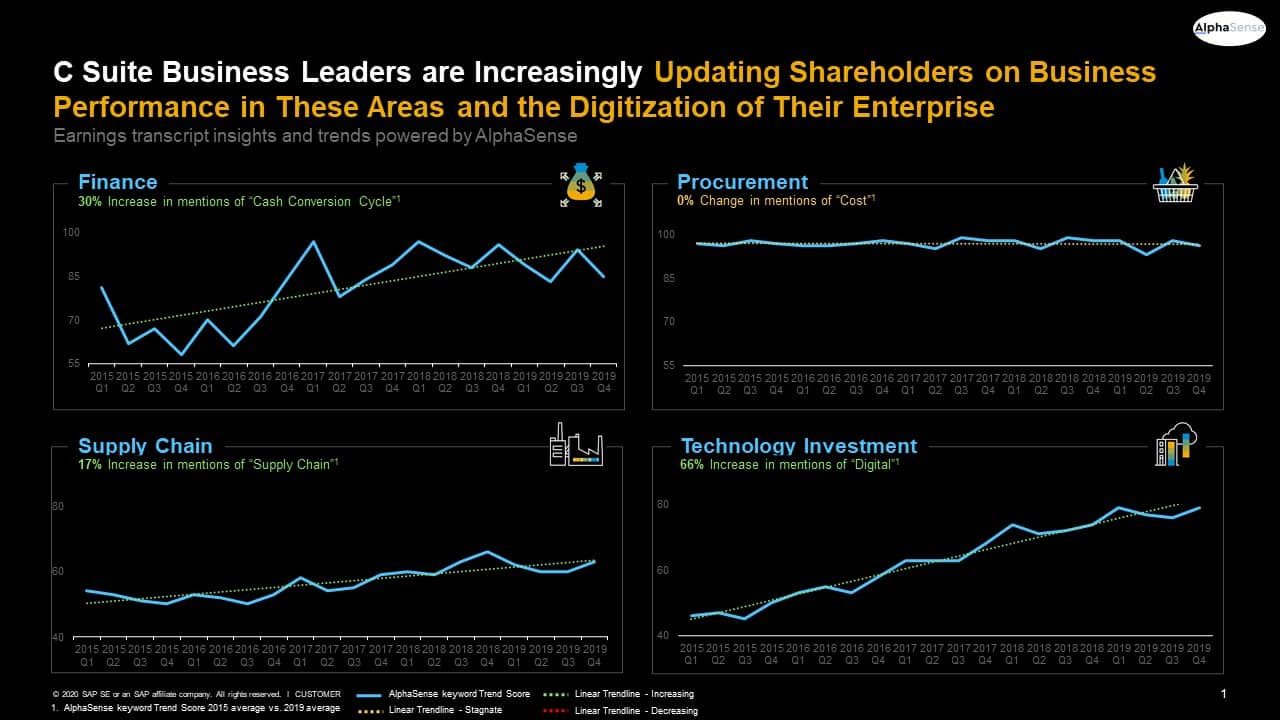Digital transformation has been an ongoing process for nearly every company. How quickly these companies adopted new technologies, in which departments and updated their operations differed by industry, creating tiers of digital pioneers and laggards. During the pandemic, however, the need for digital investment became a priority across every segment. As organizations were forced to go remote, some industry leaders mentioned accelerating their digital roadmaps by 5-7 years.
However, it wasn’t always clear whether this trend of adopting new technologies and leveraging modern vendors led to business improvement and financial success. Were companies catching up to their competitors, and did peers who adopted these digital technologies and systems outperform?
It’s easy to assume that companies that adapted to the modern world quicker would be more successful, but organizations don’t make multi-million dollar decisions based on assumptions. Organizations considering making impactful changes needed certainty to show that these innovations were worth the effort, time, and resources.
With SAP customers representing 87% of the world’s total global commerce, having a way to demonstrate the effectiveness and ROI of these digital investments was paramount.
Measuring how digital investments fuel success
Making the case that digital investments made for more successful companies required several elements to ensure any results were backed by rigorous, data-driven analysis. First, SAP wanted to demonstrate precisely how organizations found success through their digital investments compared to industry peers.
SAP used publicly available financial data in its analysis and identified key metrics that indicate its success. First, they identified KPIs across finance, supply chain, and procurement. Next, they assessed businesses according to a proprietary digital maturity score to determine how embedded technology was about their chosen KPIs. They then used this digital maturity score to uncover the financial impact across these KPIs for SAP partners against the market as a whole.
Through rigorous stress-testing, measuring against control groups, and thorough analysis, SAP was out to prove that companies with higher digital adoption and maturity outperformed the market and their peers.
Leveraging AlphaSense to understand companies better
Critical to SAP’s research was AlphaSense’s NLP technology, which transformed their hypotheses from manual to automated. SAP ran thematic searches on the AlphaSense platform to identify how the trend has changed over time to understand the cross-industry impact of the key KPIs selected. For example, in using AlphaSense’s Search Summary, the SAP team quickly identified a trend line in the volume of mentions of all of their core KPIs within earnings documents.
Fortunately, because AlphaSense centralizes these earnings reports and calls transcripts, it was easy for SAP to validate that each of their identified KPIs was, in fact, a topic that the C-Suite cared about and that their mention count in earnings documents was growing over time. Confident in their KPIs, SAP was equipped with the basis for the rest of their analysis.
Moving forward, AlphaSense can be used for future reports that seek detailed commentary hidden within dense documents or trend lines over time that speak to organizations’ or industries’ strategies.
Linking organizational success and digital adoption
This careful research and analysis culminated in SAP’s latest research paper, where they share the results from a study of 11,000 publicly traded companies to understand the ROI of technology investments.
After validating the KPIs of the cash conversion cycle, days inventory outstanding, and cost as a percentage of revenue as critical topics using AlphaSense, SAP then measured the performance of these metrics to learn if there was a correlation between digital maturity and the bottom line. In doing this, SAP understood what made digitally mature companies successful compared to peers in their industry. Ultimately, the report points out how digital leaders reach nearly twice as much growth as their peers who haven’t made such an investment.
To better understand where you stand compared to your peers, SAP is now leveraging the framework developed for this report to run industry peer benchmarks and Intelligent Enterprise Assessment surveys that detail your digital maturity. To read the latest research or request one of these benchmarking assessments, visit SAP here.
To learn how to use AlphaSense to test your research hypotheses, check out our AlphaSense X webinar that shows you how to use our AI-powered search technology.




